|
Grivas: English Opening A26
1.c4 e5 2.¤c3
¤c6
3.¤f3
¤f6
4.g3 g6 5.Bg2
Bg7 6.0-0 0-0 7.d3 d6
|
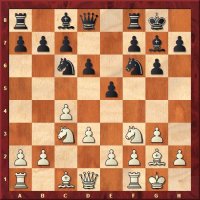 |
|
The author suggests a repertoire for Black in
this important variation of the English Opening.
In the main line 8.¦b1
a5 9.a3 it is based on the move 9…¤d4,
which leads to a totally satisfactory game for
Black.
121-A26 English Opening |
Langrock: English Defence A40
1.d4 e6 2.c4 b6 3.a3
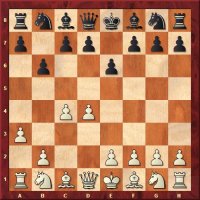 |
|
Рассмотрены
два варианта за черных: 1)
3…g6; 2) 3…Nf6 4.Nc3 Bb7
5.d5. Оба варианта ведут
к оригинальным позициям, в которых
белым необходимо играть точно
и главное, позиционно осмыслено,
чтобы удержать преимущество право выступки.
121-A40 English Defence
В варианте 3...g6
черные осуществляют построение
схемы Hippopotamus:
g6, Bg7, Ne7, d6, Nd7. Игры с
комментариями в обзоре. |
Moskalenko: Dutch Stonewall A85 etc.
1.d4 f5 2.c4 e6
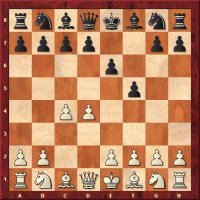 |
|
This article examines variations in which White
either completely omits 1.d4 or in which he does
not play a fianchetto. Once more Moskalenko has
composed his survey by using 100% of his own
games.
121-A85 Dutch Defence |
Rogozenko: Sicilian, Sveshnikov B33
1.e4 c5 2.¤f3
¤c6
3.d4 cxd4 4.¤xd4
¤f6
5.¤c3
e5 6.¤db5
d6 7.Ґg5
a6 8.¤a3
b5 9.¤d5
Ґe7
10.Ґxf6
Ґxf6
11.c4
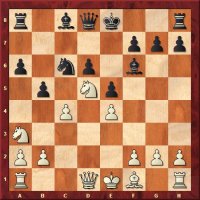 |
|
White’s plan with 11.c4 is, according to
Rogozenko, an easy one to learn and has in his
opinion led to a drop in the popularity of the
Sveshnikov Variation. The fact that White can
play for an advantage without taking any risks
is unpleasant for Black.
121-B33 Sicilian Sveshnikov |
Ftacnik: Sicilian, Najdorf B99
1.e4 c5 2.¤f3
d6 3.d4 cxd4 4.¤xd4
¤f6
5.¤c3
a6 6.Ґg5
e6 7.f4 Ґe7
8.Јf3
Јc7
9.0-0-0 ¤bd7
10.g4
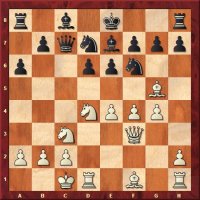 |
|
As things appear, Black is under a little
pressure in this main line of the Najdorf
System. Many of the lines are extremely sharp
and have been examined in great depth.
121-B99 Sicilian Najdorf |
Marin: Ruy Lopez, Rio de Janeiro Variation C67
1.e4 e5 2.¤f3
¤c6
3.Ґb5
¤f6
4.0-0 ¤xe4
5.d4 Ґe7
6.Јe2
¤d6
7.Ґxc6
bxc6 8.dxe5
¤b7
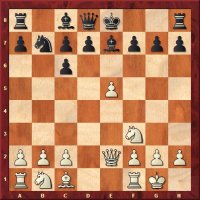 |
|
As a result of his investigations, the author
comes to the conclusion that the Rio de Janeiro
Variation is much more playable than its
reputation might suggest. This being the case,
it represents a good alternative to the Berlin
Defence 5…¤d6.
121-C67 Ruy Lopez |
Schandorff: Queen's Gambit, Ragozin D38
1.d4 d5 2.c4 e6 3.¤f3
¤f6
4.¤c3
Ґb4
5.cxd5 exd5 6.Ґg5
¤bd7
7.e3 c5 8.Ґd3
Јa5
9.Јc2
c4 10.Ґf5
0-0 11.0-0
¦e8 12.¤d2
g6 13.Ґh3
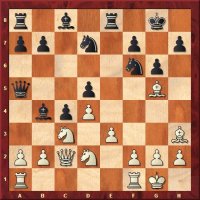 |
|
The subject here is the old move 6…¤bd7,
which leads in a relatively forced manner to the
position in the diagram. From a theoretical
point of view White should achieve an advantage,
but in praxis this not so easy to manage.
121-D38 Queens Gambit |
Krasenkow: Grьnfeld Defence D70
1.d4 ¤f6
2.c4 g6 3.f3 d5 4.cxd5
¤xd5
5.e4 ¤b6
6.¤c3
Ґg7
7.Ґe3
0-0
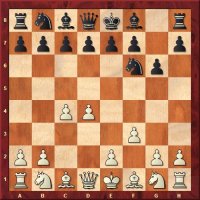 |
|
Here the author looks at the most important
variations after 3.f3, from Black’s point of
view.
Thus the survey constitutes a repertoire for
Black.
According to Krasenkow there is no reason for
Black to fear this setup.
121-D70 Gruenfeld Defence |
Marin: Queen's Indian / Catalan E15
1.d4 ¤f6
2.c4 e6 3.g3 d5 4.Ґg2
Ґb4+
5.Ґd2
Ґe7
6.¤f3
0-0 7.0-0 c6 8.Јc2
¤bd7
9.¦d1
b6 10.b3 Ґa6
11.a4
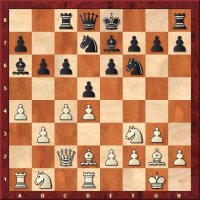 |
|
The main theme of this opening, which is more
Catalan than anything else, is the positioning
of the bishop on d2. According to Marin, the
play he has on the queenside gives the better
chances to White, so that the manoeuvre with …Ґb4+
and then …Ґe7
turns out not to be all that effective.
121-E15 Catalan-Queens Indian |
Postny: Queen's Indian Defence E15
1.d4 ¤f6
2.c4 e6 3.¤f3
b6 4.g3 Ґa6
5.b3 Ґb7
6.Ґg2
Ґb4+
7.Ґd2
c5
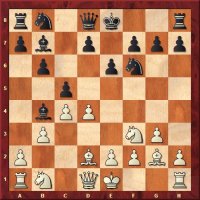 |
|
In this case too we have a mixture of two
openings: …Ґb4+
is typical of the Bogo-Indian. It is not easy
for White to achieve an advantage against this
opening, which was played in the Mexico WCh by
Grischuk against Gelfand.
121-E15 Queens Indian |
Rogozenko: Nimzoindian Defence E30
1.d4 ¤f6
2.c4 c6 3.¤c3
Ґb4
4.Ґg5
c5 5.d5 exd5 6.cxd5 d6
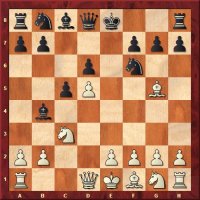 |
|
In this survey the author presents a repertoire
for Black which should in a very simple fashion
guarantee him at least a level game. This means
that 4.Ґg5
is hardly very appealing for White any more.
121-E30 Nimzoindian Defence |
Stohl: King's Indian Defence E94
1.d4 ¤f6
2.c4 g6 3.¤c3
Ґg7
4.e4 d6 5.¤f3
0-0 6.Ґe2
e5 7.0-0 ¤h5
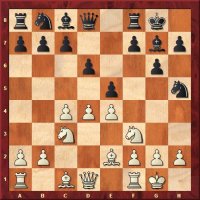 |
|
When he plays his knight to h5 Black has in mind
three ideas at the same time: pressure on d4, a
rapid f7-f5 and
¤h5-f4,
in order to secure the bishop pair. It is also
still possible to surprise one’s opponent with
this move.
121-E94 Kings Indian Defence |
|